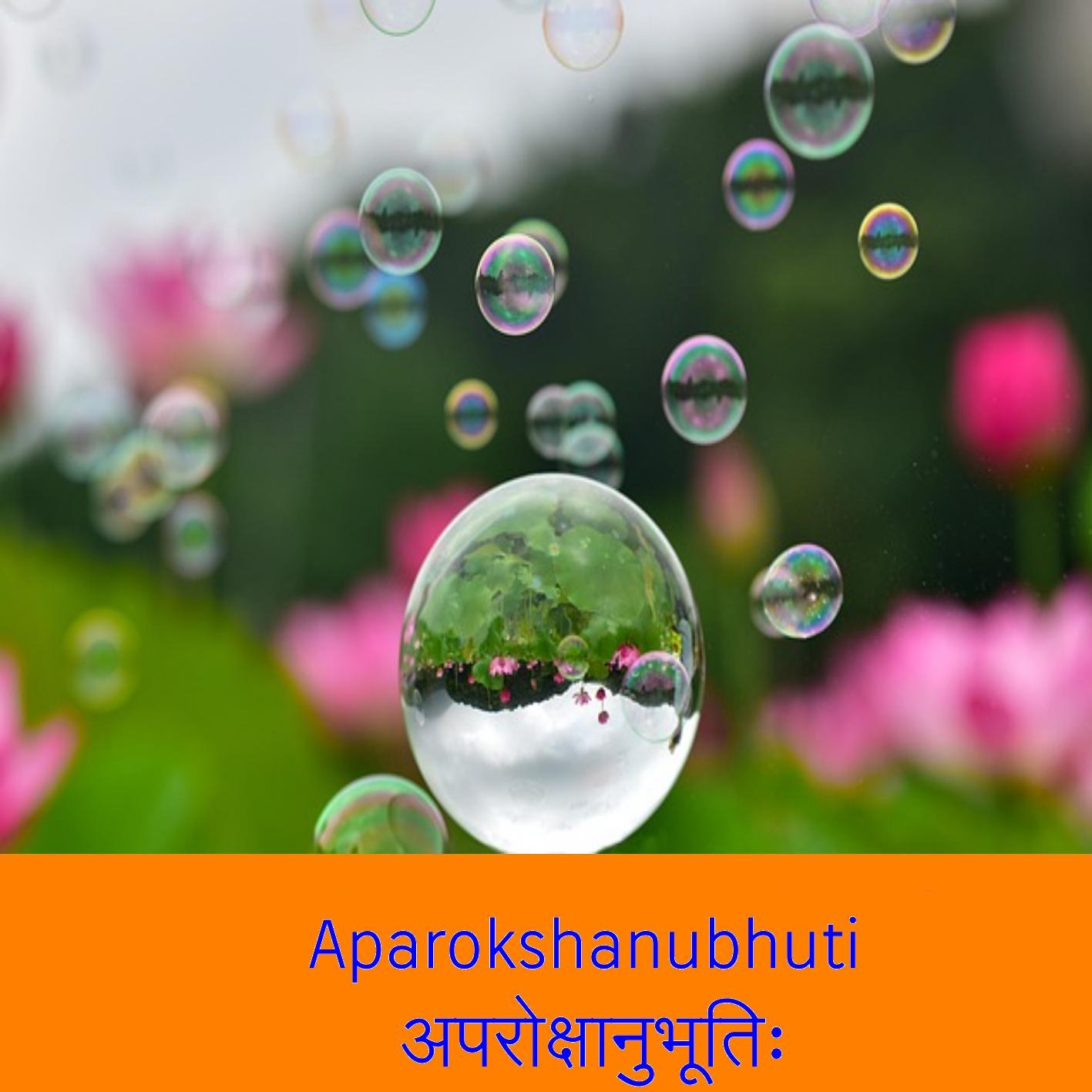Aparokshanubhuti-23
- Author
- Aurobind Padiyath
- Published
- Wed 20 Aug 2025
- Episode Link
- https://redcircle.com/shows/fe53db7f-360c-4b30-b69c-83084d6bcae3/episodes/bb0158fc-32c2-402a-aad7-720fc5c0dc40
Verse No 60
The Jīva–Brahman Difference is Apparent, Not Real
- According to Advaita, any perceived duality — such as that between jīva and Brahman — arises only in ignorance (ajñāna-avasthā).
- This difference is not ontological (real), but only linguistic and conceptual — a “nāma-mātra”.
2. Silver-on-Shell Analogy (Rajatam in Śukti)
- Classic Vedāntic example: You see silver in a shining shell on the beach.
- The mind superimposes silver (rajas) on the shell due to ignorance, but when correct knowledge arises, you see it's just a shell.
- The silver was never there in reality; it was a projection.
Likewise, the jīva is superimposed on Brahman through avidyā.
Once Brahman is known as one's true Self, the idea of jīva evaporates.
3. Power of Names in Ignorance
- “Jīva” is a label applied to Brahman seen through the lens of individuality.
- It is like calling a mirage "water" — the word persists due to wrong perception, not because the object is real.
4. When Knowledge Dawned
- Upon Self-realization, when one knows “I am Brahman” (ahaṁ brahmāsmi), the false names and distinctions lose their grip.
There is no more jīva, no more world, no more other.
The jīva–Brahman distinction exists only as long as ignorance persists.
It is a mere name, like the illusory silver seen on a shell.
Upon realizing Brahman, the truth is known — there is no jīva, only the non-dual Self.
Verse 61
1. Jīva is not a separate entity
- The idea that "I am a limited individual (jīva)" arises from ignorance (avidyā).
- In truth, the jīva is Brahman, and the distinction is only verbal — nāma-mātra.
2. The entire universe is also nāma-mātra
- Names and forms (nāma-rūpa) appear upon Brahman like waves on the ocean.
- They have no independent existence apart from Brahman.
- The manifold world is Brahman clothed in names — a projection due to Māyā.
3. Many Illustrative Analogies in Vedānta
The Upaniṣads and Advaita tradition offer multiple dṛṣṭāntas (analogies) to clarify this
4. Brahman Alone Is Real
In the final analysis, only Brahman is satyam (real).
Everything else — jīva, jagat (world) — is mithyā (dependent reality), nāma-rūpa upon the non-dual substrate.
This verse subtly but powerfully aligns with the famous declaration:
"Brahma satyam, jagan mithyā, jīvo brahmaiva nāparaḥ"
Brahman is real, the world is mithyā, and the jīva is none other than Brahman.
✨ Summary Statement
The jīva is not truly distinct from Brahman — it is only a name.
Even the entire universe is merely named upon Brahman.
Through countless analogies, Advaita Vedānta dissolves all duality, revealing One Reality alone.
Verse No 62
1. Mithyātva-vāsanā (Conviction of Unreality)
- The purpose here is to strengthen one's understanding that the world is not ultimately real — it is nāma-mātra (merely names superimposed on Brahman).
- Just as illusions (like Gandharva cities or ghosts) appear without real substance, so too does the jagat (world).
2. Dṛṣṭānta as a Teaching Tool
- Vedānta repeatedly uses analogies to break our firm habitual sense of reality in duality.
- Here, three examples illustrate that what appears vividly can still be utterly false, because it lacks a true substratum.
3. Gandharva-nagara: A Central Metaphor
- Gandharva-nagara (illusory celestial city) is a key metaphor in Vedānta for something appearing real but resting on nothing.
- So too, the world of names and forms rests on Brahman, yet the forms are not real in themselves.
4. Only Brahman is the Ādhāra (Substratum)
Appearances such as a phantom, mirage, or illusory city have no independent existence;
likewise, the jagat has no reality apart from Brahman.
This aligns with:
“ब्रह्म सत्यम्, जगन्मिथ्या”
Brahman is the real; the world is mithyā.
Just as illusory entities (like ghosts or sky-cities) appear vividly yet falsely, the entire universe, though perceived clearly, is nāma-mātra, without real substance.
Brahman alone is real; the world is mithyā, and this truth must be firmly grasped through reflection and teaching by example.
Verse No 63 & 64
1. Names and Forms Are Only Speech-Based
The pot, jar, or any object is merely a vikāra (modification) of clay. The name “pot” arises from speech (vāc), but does not indicate real transformation.
🔍 What is real is the unchanging substratum — here, clay.
Similarly, Brahman is the unchanging satya, while all else is nāma-rūpa — names and forms, hence mithyā.
2. Negation Leads to Brahman
The purpose of teaching mithyātva is not to negate the world nihilistically, but to strip off false superimpositions and point to the unchanging, ever-present Brahman.
When name (nāma) is seen to be unreal, the object (which was only a named form) collapses, and what remains is Brahman — the truth behind all appearances.
3. Shruti as Pramāṇa
The statement from the Chāndogya Upaniṣad (6.1.4) is central to Advaita:
“Vācārambhaṇaṁ vikāro nāmadheyaṁ, mṛttiketyeva satyam”
“All modifications are in speech only; clay alone is real.”
This shruti vākya serves as pramāṇa (valid means of knowledge) to assert that Brahman alone is real, and the perceived world is an apparent transformation only — not a real one.
Conclusion:-
When the name and form are recognized as unreal, what remains is Brahman, the truth.
Just as only clay is real and pots are mere names, Brahman alone is satya, and the world is vācārambhaṇaṁ — just speech-based illusion.
